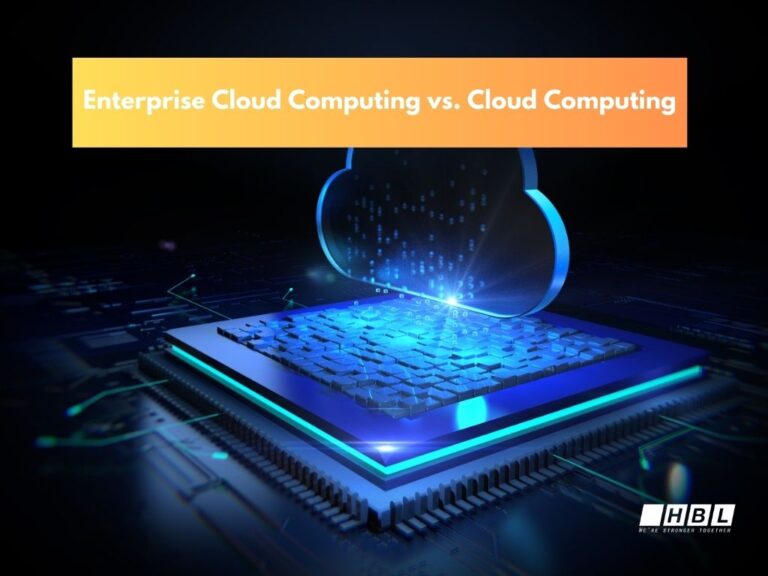Understanding how to leverage cloud solutions effectively separates high-performing organizations from those simply following trends. 94% of enterprises now use cloud services, yet 35% of cloud resources remain unutilized, costing businesses thousands in wasted spend.
Quick Answer
Cloud solutions for businesses deliver on-demand computing resources—including storage, applications, and processing power—via the internet, eliminating costly physical infrastructure. Organizations typically achieve 30-50% cost reduction by shifting from capital expenses to flexible pay-as-you-go models. The three primary service types—IaaS (infrastructure), PaaS (platforms), and SaaS (software)—enable businesses to scale instantly, access data globally, and maintain 99.99% uptime while reducing IT management overhead. Small and medium businesses now allocate over 50% of technology budgets to cloud services, reflecting the strategic shift toward cloud-first operations in 2025.
What Are Cloud Solutions for Businesses?
Cloud solutions for businesses represent internet-delivered computing services that provide scalable access to storage, processing power, databases, networking, and applications without requiring on-premises hardware infrastructure. The National Institute of Standards and Technology (NIST) defines cloud computing as “a model for enabling convenient, on-demand network access to a shared pool of configurable computing resources that can be rapidly provisioned and released with minimal management effort”.
Unlike traditional IT models where companies purchase and maintain physical servers, cloud solutions operate on utility computing principles—you pay only for resources consumed. This fundamental shift transforms IT from a capital expense requiring significant upfront investment into an operational expense that scales with business needs.
The global cloud computing market reached $912.77 billion in 2025 and projects growth to $1.614 trillion by 2030, driven by widespread enterprise adoption and the integration of emerging technologies like artificial intelligence and machine learning. For small and medium-sized businesses specifically, cloud adoption enables access to enterprise-grade capabilities previously affordable only to large corporations.
Cloud infrastructure operates through massive data centers containing commodity hardware, utilizing virtualization technologies that transform physical resources into software-defined services. This virtualization allows multiple organizations to share physical infrastructure securely through multi-tenancy models while maintaining data isolation and security.
How Cloud Solutions for Businesses Work

Cloud platforms function through several core technological components working in concert. At the foundation, virtualization creates abstraction layers that separate logical computing resources from underlying physical hardware. Hypervisors manage multiple virtual machines on single physical servers, enabling efficient resource utilization and rapid provisioning.
The cloud service delivery model follows these operational principles:
- On-Demand Self-Service: Users provision computing capabilities automatically without requiring human interaction with service providers. Through web consoles or APIs, businesses can deploy virtual servers, configure storage, or launch applications within minutes.
- Resource Pooling: Cloud providers pool computing resources to serve multiple customers using multi-tenant models. Resources get dynamically assigned and reassigned according to demand, with customers generally having no control over exact physical resource locations but able to specify geographic regions for compliance.
- Rapid Elasticity: Capabilities can be elastically provisioned and released to scale outward and inward commensurate with demand. To consumers, available capabilities often appear unlimited and can be appropriated in any quantity at any time.
- Measured Service: Cloud systems automatically control and optimize resource use through metering capabilities appropriate to the service type. Resource usage gets monitored, controlled, and reported, providing transparency for both provider and consumer.
The technical architecture typically includes compute instances (virtual machines), object storage systems, virtual networking, load balancers, and management interfaces that present unified control planes across distributed infrastructure.
Three Types of Cloud Solutions: IaaS, PaaS, and SaaS
Infrastructure as a Service (IaaS) provides fundamental computing resources including virtual machines, storage, and networking. IaaS gives organizations maximum control and flexibility, essentially renting virtualized hardware rather than purchasing physical equipment. Major IaaS providers include Amazon Web Services EC2, Microsoft Azure Virtual Machines, and Google Compute Engine. IaaS suits organizations requiring customized infrastructure configurations or running specialized workloads.
Platform as a Service (PaaS) abstracts infrastructure management entirely, providing development environments where teams can build, test, and deploy applications without managing underlying servers or operating systems. PaaS handles scaling, load balancing, and operational tasks automatically, allowing developers to focus purely on application code. Examples include Apache Stratos and Red Hat OpenShift. PaaS accelerates development cycles by eliminating infrastructure complexity.
Software as a Service (SaaS) delivers complete applications over the internet on subscription models. Users access software through web browsers without installing anything locally, with all management handled by providers. Common business SaaS applications include Salesforce for CRM, Dropbox for file storage, and Microsoft 365 for productivity. SaaS offers the fastest implementation with zero infrastructure management requirements.
The control-to-convenience spectrum positions IaaS with maximum control but higher management requirements, PaaS balancing flexibility with automation, and SaaS providing complete convenience with standardized functionality.
Core Benefits of Cloud Solutions for Business Growth
- Scalability and Elasticity: Cloud infrastructure scales resources up or down instantly based on demand. During peak business periods, you can provision additional computing capacity within minutes; during slow periods, you scale down to avoid paying for unused resources. This eliminates the traditional problem where businesses either over-provision (wasting money on idle capacity) or under-provision (losing revenue from overwhelmed systems).
- Cost Optimization: Organizations replace fixed capital expenses for data centers and servers with variable operational expenses, paying only for consumed resources. The pay-as-you-go model eliminates upfront hardware investments, reduces electricity and cooling costs, and minimizes IT staffing requirements. Small and medium businesses spending over $1.2 million annually on cloud services increased from 38% to 54% in recent years, reflecting calculated investments that deliver positive ROI.
- Global Accessibility: Cloud solutions enable teams to access business applications and data from anywhere with internet connectivity. This geographic flexibility supports remote work, international operations, and 24/7 business continuity. Providers maintain data centers across multiple global regions, allowing you to deploy applications close to end users for reduced latency and improved performance.
- Enhanced Security: Reputable cloud providers implement robust security measures including encryption, advanced threat detection, automated backup systems, and disaster recovery capabilities. Many providers maintain compliance certifications for regulatory standards like GDPR, HIPAA, and SOC 2, providing security infrastructure that would be prohibitively expensive for individual businesses to implement independently.
- Automatic Updates and Maintenance: Cloud providers handle software updates, security patches, and infrastructure maintenance automatically, freeing internal IT teams from routine maintenance tasks to focus on strategic initiatives that drive business value.
- Operational Agility: Cloud platforms provide easy access to emerging technologies including machine learning, artificial intelligence, big data analytics, and IoT platforms. You can experiment with new capabilities rapidly, testing ideas and implementing innovations orders of magnitude faster than traditional infrastructure allows.
Cloud Deployment Models: Public, Private, and Hybrid Solutions

- Public Cloud infrastructure is owned and operated by third-party providers who deliver computing resources over the internet. Multiple organizations share the same physical infrastructure (multi-tenancy) while maintaining logical separation of their data and applications. Public clouds offer maximum cost efficiency through economies of scale, zero upfront infrastructure investment, and unlimited scalability. Major public cloud providers include AWS, Microsoft Azure, and Google Cloud Platform, which collectively control approximately 63% of the global cloud infrastructure market.
- Private Cloud dedicates infrastructure exclusively to a single organization, either hosted on-premises or by a third-party provider. Private clouds provide maximum control over security configurations, compliance settings, and resource allocation. Organizations with stringent regulatory requirements or unique performance needs often choose private cloud deployments, accepting higher costs in exchange for complete customization and control.
- Hybrid Cloud combines public and private cloud environments into unified infrastructure, allowing data and applications to move between them. This model balances security requirements with cost efficiency—keeping sensitive workloads in private environments while leveraging public cloud scalability for less critical applications. Hybrid and multi-cloud approaches have emerged as predominant strategies for enterprises in 2025, with organizations recognizing that different workloads have different requirements rather than forcing all applications into single environments.
- Community Cloud infrastructure is shared by organizations with common concerns such as security requirements, compliance considerations, or mission objectives. This model suits industry consortiums or government agencies requiring specialized configurations while sharing costs across multiple participants.
The choice between deployment models depends on regulatory requirements, security needs, existing infrastructure investments, and workload characteristics.
Dynamic Resource Provisioning: Avoiding the Under/Over-Provisioning Trap
Traditional IT infrastructure creates two costly problems: under-provisioning leads to overwhelmed systems that cannot handle demand peaks, resulting in lost customers and revenue. Over-provisioning wastes capital on unused capacity—data shows that average server utilization runs only 5-20%, meaning organizations pay for 80-95% idle infrastructure.
Peak workloads typically exceed average demand by factors of 2 to 10, yet traditional infrastructure requires provisioning for peak capacity. An e-commerce site experiencing holiday shopping surges must maintain expensive server capacity year-round despite needing it only during specific weeks. Photo-sharing services see usage spikes after holidays when users upload vacation photos, yet must pay for infrastructure sitting idle during normal periods.
Cloud solutions solve this through dynamic provisioning that automatically adjusts resources to match real-time demand. You provision the actual resources you need at any moment, then scale up or down instantly as requirements change. Auto-scaling policies monitor application metrics like CPU utilization, memory consumption, or request queue depth, automatically launching additional instances when thresholds are exceeded and terminating them when demand subsides.
The elasticity principle enables you to handle unpredictable workload variations without manual intervention. A marketing campaign that unexpectedly goes viral can trigger automatic infrastructure scaling to maintain performance, then scale down after traffic normalizes—all without human involvement and without paying for unused capacity during normal operations.
Implementation requires understanding your workload patterns, establishing appropriate scaling triggers, and configuring policies that balance performance with cost. At HBLAB, we’ve implemented dynamic provisioning strategies for clients that reduced infrastructure costs by 30-40% while improving application performance during peak periods.
Essential Cloud Services and Solutions for Business Operations
- Cloud Backup Solutions for Small Business provide automated, secure data protection without expensive hardware. Traditional backup systems require purchasing storage devices, managing backup schedules manually, and hoping physical media doesn’t fail. Cloud backup automatically copies critical business data to remote data centers with multiple redundant copies. Benefits include automated scheduling that ensures consistent backups without staff intervention, remote accessibility allowing data recovery from any location, and scalability that grows storage capacity as data volumes increase. Most providers guarantee 99.9%+ uptime with redundant systems ensuring data remains accessible even during hardware failures.
- Cloud CRM Solutions for Small Business centralize customer relationship management in accessible platforms. Cloud-based CRM systems like Salesforce track customer interactions, sales pipelines, and contact information accessible to teams regardless of location. Integration with other business systems creates unified customer views that improve service quality and sales effectiveness. Cloud CRM eliminates expensive server infrastructure while providing enterprise capabilities including sales forecasting, marketing automation, and customer analytics.
- Cloud ERP Solutions for Small Business integrate core business functions—accounting, inventory management, supply chain, human resources—into unified systems accessible via internet. Traditional ERP systems required substantial infrastructure investments and lengthy implementations, limiting them to large enterprises. Cloud-based ERP democratizes access through subscription pricing and simplified deployment. Organizations using cloud ERP report improved operational processes, enhanced decision-making through real-time data visibility, and better scalability as business grows. Leading cloud ERP platforms include Microsoft Dynamics 365 Business Central, SAP Business ByDesign, and Oracle NetSuite.
- Cloud Storage Solutions for Business provide secure, accessible file storage and collaboration platforms. Solutions range from end-user file sharing tools like Google Workspace and Microsoft OneDrive to infrastructure-level object storage like Amazon S3. Business cloud storage enables team collaboration with simultaneous document editing, version control, and permission management. Pricing varies widely: Google Workspace starts at $7 per user monthly with 30GB storage, while enterprise solutions like Box offer unlimited storage at $15 per user monthly.
These specialized cloud services address specific business needs while sharing common benefits of accessibility, automatic updates, and subscription-based economics that convert capital expenses to predictable operational costs.
Challenges and Solutions When Implementing Cloud Solutions
- Data Security and Compliance Concerns: Organizations worry about data breaches, unauthorized access, and regulatory compliance when moving sensitive information to cloud environments. Solution: Implement encryption for data both in transit and at rest. Choose cloud providers with relevant compliance certifications (SOC 2, ISO 27001, HIPAA) that match your industry requirements. Establish identity and access management (IAM) with multi-factor authentication and least-privilege access principles. Conduct regular security audits and continuous monitoring to detect anomalies before they become breaches.

- Cost Management and Budget Unpredictability: Cloud spending can spiral beyond initial estimates due to inefficient resource usage, data transfer fees, or lack of cost visibility. Solution: Establish clear budgets and monitor costs continuously using provider cost management tools. Implement auto-scaling policies that prevent over-provisioning while maintaining performance. Use reserved instances or committed use discounts for predictable workloads to reduce costs by 30-50% compared to on-demand pricing. Regularly review and optimize resource allocation, eliminating unused instances and right-sizing virtual machines based on actual utilization patterns.
- Migration Complexity and Downtime Risks: Moving existing applications and data to cloud environments involves technical challenges including dependency mapping, data transfer volumes, and application compatibility. Solution: Adopt phased migration strategies starting with low-risk, non-critical workloads. Use discovery tools to identify application dependencies and data relationships before migration begins. Implement parallel operations where legacy and cloud systems run simultaneously during transition periods, minimizing cutover risks. Plan migrations during low-traffic periods and establish rollback procedures for failed migrations.
- Skills Gap and Training Requirements: Cloud technologies require expertise that existing IT teams may lack, creating implementation and management challenges. Solution: Invest in training programs that upskill internal teams on cloud architecture, security, and management. Partner with experienced cloud solution providers like HBLAB who bring specialized expertise to guide implementations and transfer knowledge to your teams. Start with managed cloud services that handle complex technical operations while your team develops competency.
- Vendor Lock-In Concerns: Proprietary cloud services can create dependencies that make switching providers difficult or expensive. Solution: Utilize containerization technologies like Docker and Kubernetes that provide portability across cloud platforms. Design applications using cloud-agnostic architectures where possible, avoiding provider-specific services for core functionality. Negotiate service-level agreements that include data portability provisions and export capabilities.
👉 Pro Tip: If navigating cloud migration complexity seems daunting, consider partnering with experienced providers like HBLAB who have successfully guided hundreds of businesses through secure, cost-effective cloud transformations.
Cloud Migration Blueprint: 6-Phase Implementation Roadmap
Phase 1: Assessment and Discovery (Weeks 1-2)
Inventory existing applications, data, and infrastructure dependencies. Document current costs, performance metrics, and pain points. Identify workloads suitable for cloud migration versus those requiring on-premises operation due to compliance, latency, or technical constraints. Assess team skills and training needs. Establish migration objectives, success criteria, and budget parameters.
Deliverables: Complete application inventory, dependency maps, business case with projected ROI, executive stakeholder approval.
Phase 2: Strategy and Planning (Weeks 3-4)
Select deployment model (public, private, hybrid) and cloud provider(s) based on requirements. Determine migration approach for each workload: rehost (lift-and-shift), replatform (minor optimizations), refactor (re-architect for cloud-native), or retire/replace. Develop detailed migration schedule prioritizing workloads by business criticality and complexity. Design target cloud architecture including networking, security, governance, and disaster recovery configurations.
Deliverables: Detailed migration plan, cloud architecture designs, provider contracts, security and compliance framework.
Phase 3: Pilot Migration (Weeks 5-8)
Execute migration of low-risk, non-critical workload to validate processes and build team expertise. Implement monitoring and management tools. Test security controls, backup procedures, and disaster recovery processes. Document lessons learned and refine migration procedures. Establish performance baselines for comparison with on-premises operations.
Deliverables: Successfully migrated pilot workload, validated procedures, team training completion, refined migration playbooks.
Phase 4: Core Workload Migration (Weeks 9-16)
Migrate production workloads in planned waves based on priority and dependencies. Maintain parallel operations during transition periods to minimize risk. Implement data synchronization between on-premises and cloud during cutover phases. Conduct testing and validation after each migration wave. Address issues promptly and adjust subsequent plans based on experiences.
Deliverables: Migrated production workloads, validated performance and functionality, user acceptance testing completion.
Phase 5: Optimization and Tuning (Weeks 17-20)
Right-size cloud resources based on actual utilization patterns rather than initial estimates. Implement cost optimization including reserved instances, auto-scaling policies, and resource scheduling. Enhance security configurations, establish backup verification, and test disaster recovery procedures. Optimize network configurations to reduce data transfer costs and improve performance. Decommission on-premises infrastructure no longer required.
Deliverables: Optimized resource configurations, cost reduction implementation, decommissioned legacy systems.
Phase 6: Ongoing Management and Governance (Continuous)
Establish continuous monitoring of costs, performance, security, and compliance. Implement regular access reviews and security assessments. Maintain documentation and update disaster recovery procedures. Train staff on new capabilities and best practices. Plan for continuous improvement and adoption of new cloud services that drive business value.
Deliverables: Governance framework, monitoring dashboards, continuous improvement processes.
This structured approach reduces migration risks while building organizational cloud competency systematically. Organizations attempting rapid all-at-once migrations often encounter problems that phased approaches avoid.
👉 Accelerate your cloud journey!
Emerging Trends in Cloud Solutions for Businesses (2025)
- AI-Powered Automation and Intelligence: Cloud platforms increasingly integrate artificial intelligence and machine learning capabilities directly into infrastructure and applications to strengthen cloud solutions for businesses. 72% of organizations now utilize generative AI services hosted on cloud infrastructure, accelerating adoption of cloud solutions for businesses. These capabilities enable automated customer service through intelligent chatbots, predictive analytics for demand forecasting, and process optimization through natural language processing—practical outcomes that enhance cloud solutions for businesses. Cloud providers deliver pre-trained AI models and development platforms that democratize access to capabilities previously requiring specialized data science teams, further improving cloud solutions for businesses.
- Edge-Cloud Integration: The explosive growth of IoT devices creates demand for processing data closer to where it’s generated rather than sending everything to centralized cloud data centers, a key evolution in cloud solutions for businesses. Edge-cloud hybrid architectures place computing resources at network edges for real-time processing while maintaining connections to centralized cloud for analytics and storage, making edge designs integral to cloud solutions for businesses. Manufacturing environments with sensor-heavy production lines, retail settings using real-time customer analytics, and smart city initiatives benefit particularly from this distributed computing model, which complements cloud solutions for businesses.
- Hybrid and Multi-Cloud Dominance: Rather than committing exclusively to single cloud providers, organizations increasingly adopt hybrid and multi-cloud strategies that balance workloads across environments—an approach central to resilient cloud solutions for businesses. This approach matches each application to its optimal deployment model—keeping regulated data on-premises while leveraging public cloud scalability for other workloads, a practical strategy for cloud solutions for businesses. Enhanced management platforms provide unified visibility and control across diverse cloud environments, simplifying governance of complex multi-cloud architectures and strengthening cloud solutions for businesses.
- Increased Security and Zero-Trust Architectures: Cloud security evolves beyond perimeter defenses toward zero-trust models where no user or device is automatically trusted, now a baseline for cloud solutions for businesses. Cloud providers implement advanced identity verification, continuous authentication, and behavior analysis to detect anomalies indicating compromised credentials or insider threats, elevating the security posture of cloud solutions for businesses. Encryption becomes default rather than optional, with data protected both at rest and in transit using advanced cryptographic methods—another essential layer in cloud solutions for businesses.
- Serverless and Container-Native Platforms: Serverless computing abstracts infrastructure management entirely, allowing developers to deploy code without provisioning or managing servers—an efficiency gain for cloud solutions for businesses. Containerization through technologies like Kubernetes provides application portability across different cloud environments, reducing vendor lock-in concerns and future-proofing cloud solutions for businesses. These approaches accelerate development cycles and optimize costs by charging only for actual compute time rather than pre-provisioned capacity, improving ROI from cloud solutions for businesses.
- Industry-Specific Cloud Solutions: Cloud providers develop specialized offerings tailored to specific industries—financial services clouds with compliance frameworks for banking regulations, healthcare clouds with HIPAA-compliant architectures, retail clouds with integrated e-commerce and inventory management—verticalization that matures cloud solutions for businesses. These vertical solutions provide pre-configured capabilities that reduce implementation time while ensuring regulatory compliance, driving faster value from cloud solutions for businesses.
The cloud computing market projects growth from $943.65 billion in 2025 to $2.3 trillion by 2030, driven by these technological advances and increasing enterprise adoption across all business sizes and industries—evidence of momentum behind cloud solutions for businesses.
When to Use Cloud Solutions vs. On-Premises Infrastructure
Choose Cloud Solutions When:
-
Your business experiences variable or unpredictable workload patterns requiring frequent scaling that is best handled by cloud solutions for businesses.
-
You want to minimize upfront capital investment in IT infrastructure by shifting to operational expenditure with cloud solutions for businesses.
-
Your teams require access to applications and data from multiple locations or support remote work, a natural fit for cloud solutions for businesses.
-
You need faster deployment of new applications and services than traditional infrastructure allows, achievable through cloud solutions for businesses.
-
Your organization lacks IT expertise for managing complex infrastructure and security, which can be simplified by cloud solutions for businesses.
-
You want to leverage emerging technologies like AI, machine learning, or big data analytics without building specialized infrastructure, enabled by cloud solutions for businesses.
Consider On-Premises or Hybrid Approaches When:
-
Regulatory requirements mandate data remain within specific geographic boundaries or on private infrastructure rather than public cloud solutions for businesses.
-
You operate applications with extreme low-latency requirements that cloud network delays would impact negatively, a limit sometimes addressed by hybrid cloud solutions for businesses.
-
You have substantial existing infrastructure investments not yet fully depreciated, which may postpone migration to cloud solutions for businesses.
-
Your workloads run consistently at high utilization making dedicated hardware more cost-effective than cloud pricing, potentially reducing reliance on cloud solutions for businesses.
-
You require complete control over every infrastructure aspect including physical security, which may exceed the scope of standard cloud solutions for businesses.
-
Data gravity issues make transferring large datasets to cloud prohibitively expensive or time-consuming, affecting near-term adoption of cloud solutions for businesses.
Hybrid cloud architectures often provide optimal solutions, keeping regulated or latency-sensitive workloads on-premises while leveraging cloud scalability for other applications—often the most pragmatic path within cloud solutions for businesses. This balanced approach captures cloud benefits without forcing all workloads into environments where they don’t fit well, preserving flexibility in cloud solutions for businesses.
Evaluate your specific requirements around compliance, performance, cost, and control rather than assuming cloud is universally superior or inferior to on-premises infrastructure; the right answer depends on your unique business context and technical requirements, including how you plan to implement cloud solutions for businesses.
Industry Performance Benchmarks: Cloud Solutions ROI by Sector
- Information Technology and Telecommunications: The IT sector leads cloud adoption with 25% market share in 2025, utilizing cloud infrastructure for software development, testing environments, and service delivery platforms that exemplify cloud solutions for businesses. Organizations in this sector report 60-70% reduction in infrastructure provisioning time, accelerating product development cycles and time-to-market—clear benefits of cloud solutions for businesses. Cloud-powered DevOps practices enable daily or even hourly code deployments versus monthly release cycles typical with traditional infrastructure, demonstrating operational agility in cloud solutions for businesses.
- Financial Services and Banking: The BFSI sector allocates significant resources to cloud with 21.13% of cloud spending in 2024, driven by regulatory compliance requirements, disaster recovery capabilities, and customer-facing digital services that depend on cloud solutions for businesses. Financial institutions report 40-50% cost savings on infrastructure while achieving 99.99% uptime for critical transaction systems—performance aligned with cloud solutions for businesses. Cloud solutions enable rapid deployment of customer analytics, fraud detection systems, and mobile banking applications that traditional infrastructure couldn’t support economically, reinforcing adoption of cloud solutions for businesses.
- Healthcare and Life Sciences: Healthcare organizations increasingly adopt cloud solutions for electronic health records, medical imaging storage, and telemedicine platforms as fundamental cloud solutions for businesses in this sector. The healthcare segment projects 19.04% CAGR growth through 2030, the fastest of any sector, reflecting confidence in cloud solutions for businesses. Cloud-based healthcare tools enable provider collaboration, improve patient data accessibility, and support remote care delivery; organizations report 35-45% reduction in data storage costs while improving disaster recovery capabilities, validating cloud solutions for businesses.

- Retail and E-Commerce: Retail organizations leverage cloud solutions for e-commerce platforms, inventory management, and customer relationship systems—core cloud solutions for businesses in retail. Cloud infrastructure handles seasonal demand spikes (holiday shopping, promotional events) that would require massive over-provisioning with traditional infrastructure, showcasing elasticity in cloud solutions for businesses. Retailers report 50-60% reduction in time-to-deploy new digital services and marketing campaigns, improving competitive responsiveness through cloud solutions for businesses.
- Manufacturing: Manufacturing companies adopt cloud ERP, supply chain management, and IoT analytics platforms as strategic cloud solutions for businesses. Cloud solutions enable real-time visibility across global operations, predictive maintenance for equipment, and demand forecasting, practical gains from cloud solutions for businesses. Manufacturers report 30-40% improvement in inventory optimization and 25-35% reduction in unplanned equipment downtime through cloud-enabled predictive analytics, underscoring ROI from cloud solutions for businesses.
These sector-specific results demonstrate that cloud solutions deliver measurable business outcomes beyond simple cost reduction, enabling capabilities and agility that transform competitive positioning—evidence of the strategic value of cloud solutions for businesses.
HBLAB – Your Trusted Cloud Solutions Partner
With 10+ years of experience delivering enterprise software solutions and a team of 630+ professionals, HBLAB provides expert guidance for businesses navigating cloud adoption. Our CMMI Level 3 certification ensures high-quality, process-driven implementations that minimize risks and maximize return on cloud investments.
Since 2017, HBLAB has been at the forefront of AI-powered cloud solutions, helping organizations leverage intelligent automation, predictive analytics, and machine learning capabilities integrated with modern cloud infrastructure. Our experience spans multiple industries including financial services, healthcare, manufacturing, and retail, giving us deep understanding of sector-specific compliance requirements and technical challenges.

We offer flexible engagement models—offshore development, onsite support, and dedicated cloud teams—tailored to your specific needs and budget constraints. Our cloud services typically deliver 30% cost savings compared to traditional implementation approaches while maintaining enterprise-grade quality standards.
Whether you’re planning initial cloud migration, optimizing existing cloud deployments, or implementing specialized cloud solutions like backup systems, CRM platforms, or ERP integrations, HBLAB’s experienced team guides you through every phase. From assessment and strategy through implementation and ongoing optimization, we transfer knowledge to your internal teams while ensuring successful outcomes.
Our partnership with leading AI research institutes positions us to deliver cutting-edge cloud solutions that incorporate the latest advancements in artificial intelligence, machine learning, and intelligent automation—giving your organization competitive advantages through technology leadership.
Contact HBLAB for a free consultation and can transform your business operations while reducing costs and improving agility!
Frequently Asked Questions
1. Which cloud service is best for business?
The best cloud service depends on your specific requirements, but the market leaders are AWS (32% market share), Microsoft Azure (21%), and Google Cloud Platform (12%). AWS offers the most comprehensive service portfolio and global infrastructure. Azure integrates seamlessly with Microsoft products like Office 365 and Windows Server, making it ideal for enterprises already in the Microsoft ecosystem. Google Cloud Platform excels in data analytics, machine learning, and developer-friendly tools. For small businesses, consider factors like pricing transparency, technical support quality, and integration with existing tools when selecting providers.
2. What are cloud-based business solutions?
Cloud-based business solutions are software applications and computing resources delivered over the internet rather than installed on local computers or servers. These include cloud backup solutions for data protection, cloud CRM systems for customer relationship management, cloud ERP platforms for integrated business operations, cloud storage services for file management and collaboration, and cloud-hosted productivity tools like email, document editing, and video conferencing. Organizations access these solutions through web browsers or mobile apps, with providers handling all infrastructure, maintenance, and security.
3. What are the 4 types of cloud services?
The four primary cloud service models are IaaS (Infrastructure as a Service), providing virtual computing resources like servers and storage; PaaS (Platform as a Service), offering development environments for building applications without managing infrastructure; SaaS (Software as a Service), delivering complete applications over the internet on subscription models; and FaaS (Function as a Service) or serverless computing, executing code without provisioning servers. These models differ in control level and management responsibility—IaaS provides maximum control, PaaS balances flexibility with automation, and SaaS offers complete convenience with zero infrastructure management.
4.What are the big 3 cloud providers?
The big three cloud providers dominating the market are Amazon Web Services (AWS) with approximately 30-32% market share, Microsoft Azure with around 21-23%, and Google Cloud Platform with roughly 12%. Together these hyperscalers control approximately two-thirds of the global IaaS and PaaS market. AWS leads in service breadth and global infrastructure with over 115 availability zones across 37 geographic regions. Azure provides deep integration with Microsoft’s enterprise software ecosystem. Google Cloud excels in data analytics, machine learning, and open-source technologies.
5. What are the main 3 cloud services?
The three main cloud service categories are compute services (virtual machines and processing power for running applications), storage services (data storage including object storage, block storage, and file systems for persisting information), and networking services (virtual networks, load balancers, and content delivery for connecting resources and users). Additionally, most cloud platforms offer database services (managed SQL and NoSQL databases), security and identity services (authentication, encryption, access control), and analytics and AI services (big data processing, machine learning platforms). These core services form the foundation upon which businesses build cloud solutions.
6. How much does a cloud server cost for a small business?
Cloud server costs vary widely based on computing power, storage, and usage patterns. Basic virtual machines suitable for small websites or applications start around $5-10 per month. Small business workloads typically range from $50-500 monthly for standard configurations. Companies with more substantial requirements might spend $1,200+ annually (54% of SMBs exceed this threshold). Major factors affecting costs include compute instance types, data storage volumes, network bandwidth consumption, and additional services like databases or backup. Use provider calculators from AWS, Azure, or Google Cloud to estimate specific costs based on your requirements. Many providers offer free tiers allowing you to test services before committing.
7. Is Google Cloud server free?
Google Cloud Platform offers a free tier with $300 in credits for new users valid for 90 days, allowing you to test various services. Additionally, Google provides an “Always Free” tier including specific resources like one small compute instance, 5GB of standard storage, and limited amounts of BigQuery analytics and Cloud Functions usage that remain free indefinitely as long as you stay within usage limits. Google Drive for personal use includes 15GB free storage, though business accounts under Google Workspace require paid subscriptions starting at $7 per user monthly. While the free tier helps evaluate Google Cloud, production business workloads typically require paid services beyond free tier limitations.
8. Can I set up my own cloud server?
You can establish private cloud infrastructure using technologies like OpenStack, VMware vSphere, or Microsoft Azure Stack running on your own hardware. This approach provides complete control over infrastructure and data location, suitable for organizations with specific compliance requirements or existing hardware investments. However, building private clouds requires significant technical expertise, upfront capital investment in servers and networking equipment, ongoing maintenance, and utility costs for electricity and cooling. For most small and medium businesses, the costs and complexity of private cloud infrastructure exceed benefits compared to using public cloud providers or hybrid approaches. Managed private cloud services where providers handle infrastructure while dedicating resources exclusively to your organization offer middle-ground options.
9. What is the best cloud hosting provider?
The best cloud hosting provider depends on your specific requirements, technical expertise, and budget. AWS leads for organizations needing comprehensive service portfolios, global scale, and mature ecosystems. Microsoft Azure excels for businesses already using Microsoft technologies with seamless integration to Office 365, Windows Server, and enterprise tools. Google Cloud Platform suits data-intensive workloads requiring advanced analytics and machine learning capabilities. For smaller businesses prioritizing simplicity and cost-efficiency, providers like DigitalOcean, Vultr, or Linode offer straightforward pricing and developer-friendly interfaces. Evaluate providers based on pricing transparency, technical support quality, compliance certifications matching your industry, geographic data center locations, and specific services you require.
10. What are cloud storage solutions for business?
Cloud storage solutions for business provide secure, accessible platforms for storing and managing files, documents, and data over the internet. Popular options include Google Workspace for collaboration with 30GB+ per user starting at $7 monthly, Microsoft OneDrive offering 1TB per user with Microsoft 365 integration from $5 monthly, Dropbox Business providing 5TB team storage with advanced file synchronization at $15 per user monthly, and Box delivering unlimited enterprise storage with robust security from $15 per user monthly. Object storage services like Amazon S3 and Wasabi suit businesses with massive data volumes requiring infrastructure-level storage. These solutions enable remote access, automated backup, version control, team collaboration, and granular permission management.
CONTACT US FOR A FREE CONSULTATION
Read More:
– Cloud Network Security: Complete Guide to Secure Cloud Networking in 2025
– Cloud Management Outsourcing: Surging Scalability in 2025
– Crushing Data Bottlenecks with Next-Gen Database as a Service in 2025




